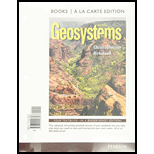
Concept explainers
To determine: The diagram of the new nucleus when the given isotope emits a positron
Answer to Problem 5.45UTC
Solution:
The new nucleus when the given isotopes emit a positron is as follows:

Explanation of Solution
Isotopes:
The atoms of an element with different mass number or atomic mass are called isotopes. They have same number of protons and electrons but different number of neutrons.
Therefore it in not necessary that all atoms of a given element contain the same number of neutrons in their nuclei . For example hydrogen has three isotopes
Positron particle (

To balance the nuclear reaction as follows:
- The sum of the subscript means the
atomic numbers must be equal on the both side of the equation. - The sum of the superscript means the mass numbers must be equal on the both side of the equation.
Calculation:
When an atom of X-11 emits a positron then Y-11 is formed. The balanced nuclear reaction is as follows:
Therefore; the new nucleus when the given isotopes emit a positron; has same in mass number and 1 unit’s decreases in atomic number as follows:

Want to see more full solutions like this?
Chapter 5 Solutions
Chemistry: An Introduction to General, Organic, and Biological Chemistry, Books a la Carte Plus MasteringChemistry with eText -- Access Card Package (12th Edition)
 ChemistryChemistryISBN:9781305957404Author:Steven S. Zumdahl, Susan A. Zumdahl, Donald J. DeCostePublisher:Cengage Learning
ChemistryChemistryISBN:9781305957404Author:Steven S. Zumdahl, Susan A. Zumdahl, Donald J. DeCostePublisher:Cengage Learning ChemistryChemistryISBN:9781259911156Author:Raymond Chang Dr., Jason Overby ProfessorPublisher:McGraw-Hill Education
ChemistryChemistryISBN:9781259911156Author:Raymond Chang Dr., Jason Overby ProfessorPublisher:McGraw-Hill Education Principles of Instrumental AnalysisChemistryISBN:9781305577213Author:Douglas A. Skoog, F. James Holler, Stanley R. CrouchPublisher:Cengage Learning
Principles of Instrumental AnalysisChemistryISBN:9781305577213Author:Douglas A. Skoog, F. James Holler, Stanley R. CrouchPublisher:Cengage Learning Organic ChemistryChemistryISBN:9780078021558Author:Janice Gorzynski Smith Dr.Publisher:McGraw-Hill Education
Organic ChemistryChemistryISBN:9780078021558Author:Janice Gorzynski Smith Dr.Publisher:McGraw-Hill Education Chemistry: Principles and ReactionsChemistryISBN:9781305079373Author:William L. Masterton, Cecile N. HurleyPublisher:Cengage Learning
Chemistry: Principles and ReactionsChemistryISBN:9781305079373Author:William L. Masterton, Cecile N. HurleyPublisher:Cengage Learning Elementary Principles of Chemical Processes, Bind...ChemistryISBN:9781118431221Author:Richard M. Felder, Ronald W. Rousseau, Lisa G. BullardPublisher:WILEY
Elementary Principles of Chemical Processes, Bind...ChemistryISBN:9781118431221Author:Richard M. Felder, Ronald W. Rousseau, Lisa G. BullardPublisher:WILEY





